At Patio de Sombras we believe that the role nature should play in architecture and urban planning projects should be fundamental. Nature not understood as an ornamental element of the project, but accepting it as a living element that helps to sustain the ecosystems of our surroundings. We saw some examples where this role was assumed in different ways in projects at different scales in our entry “Life Corridors“. This week we want to dedicate it once again to nature, worked as an architectural, artistic and landscape object.
Our reflection comes from London Fieldworks, an interdisciplinary collective founded in 2000 by artists Bruce Gilchrist and Jo Joelson. To the traditional definition of “ecology” they add the relationships it can establish with people and technology. With this approach they develop a work that surpasses art; exhibitions, sculptures, videos, installations, publications and also architecture.
Spontaneous cities
Faced with this rupture of our cities with the environment, as a result of their progressive hardening, artistic initiatives or responses appear such as “Spontaneous City”, an idea that combines architecture, sculpture and ecology. London Fieldworks generates a composition based on the repetition of different modules that will serve as home to different species that live in city parks. Thus, this work becomes a city of insects and birds that protects the local ecosystems, the city for the other inhabitants.
The group has carried out this idea on three different occasions. Despite their repetitive language, the forms have their germ in the characteristics of the neighbourhood where they are found. In its first “Spontaneous City” (2010), London Fieldworks generated several models that dialogued with the most common building typology of its location. The first work situated two spontaneous cities in opposite neighbourhoods.

Model related to traditional housing. 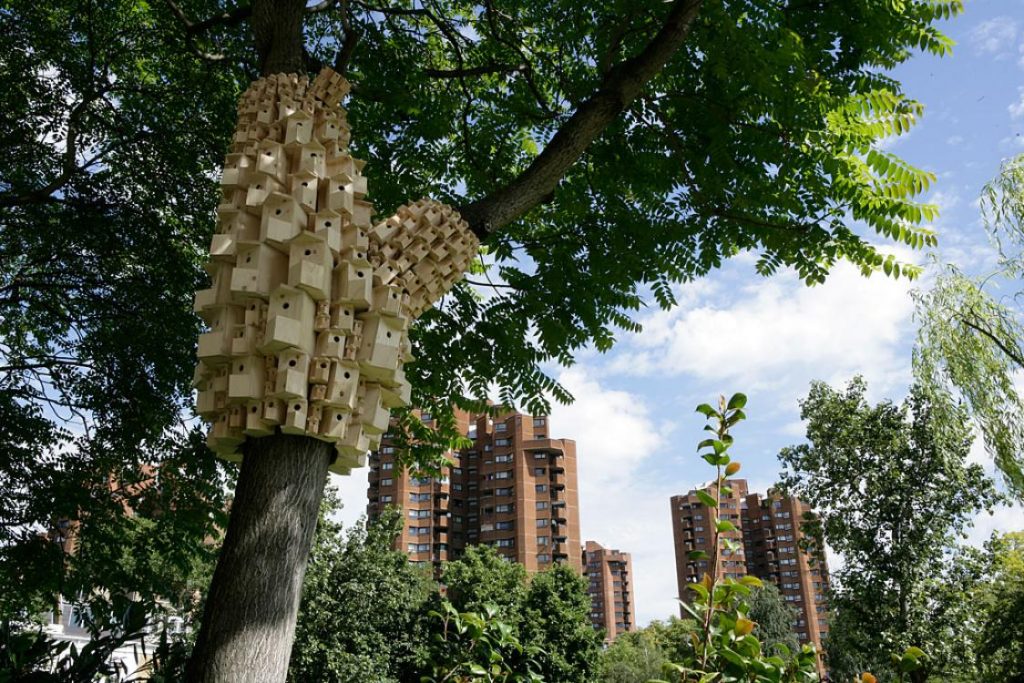
Model related to social housing.
Contrast appears in this work to formally differentiate the responses, both serving the same function. The different modules fit together like letters in a text, obtaining an interesting piece that surprises and enriches those who find it. A juicy text that tells us about its environment through mimicry.
In its second “Spontaneous City” (2011), the reflection transcends the typology built to travel to the past. This new city for the other inhabitants takes its shape from the old buildings that populated the district of Clerkenwell. A place with religious roots that germinated between the 12th and 15th centuries, roots that are now pruned as a result of a gentrifying process that seeks its “sanitation” through urban renewal. The form becomes a mirage that connects with time, drawing the denunciation with its façade.
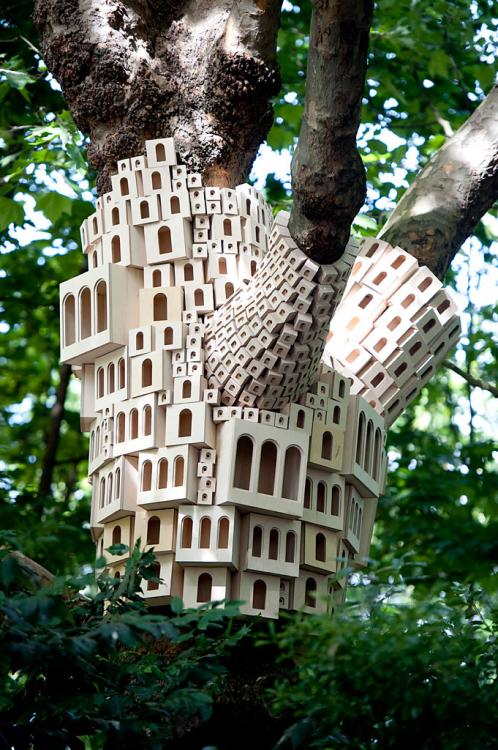
In its third “Spontaneous City” (2012), the group leaves the city of London to work in Clumber Park, in the city of Nottinghamshire. Again, the relationship with the place arises from time. Nottinghamshire’s past tells of a city that housed the summer palace of the Dukes of Newcasttle, an 18th century building that was demolished in 1938 as a result of its poor state of conservation. A great loss in the British heritage, which ghost will remain in this new spontaneous city, but that will not frighten its new tenants; the other inhabitants.
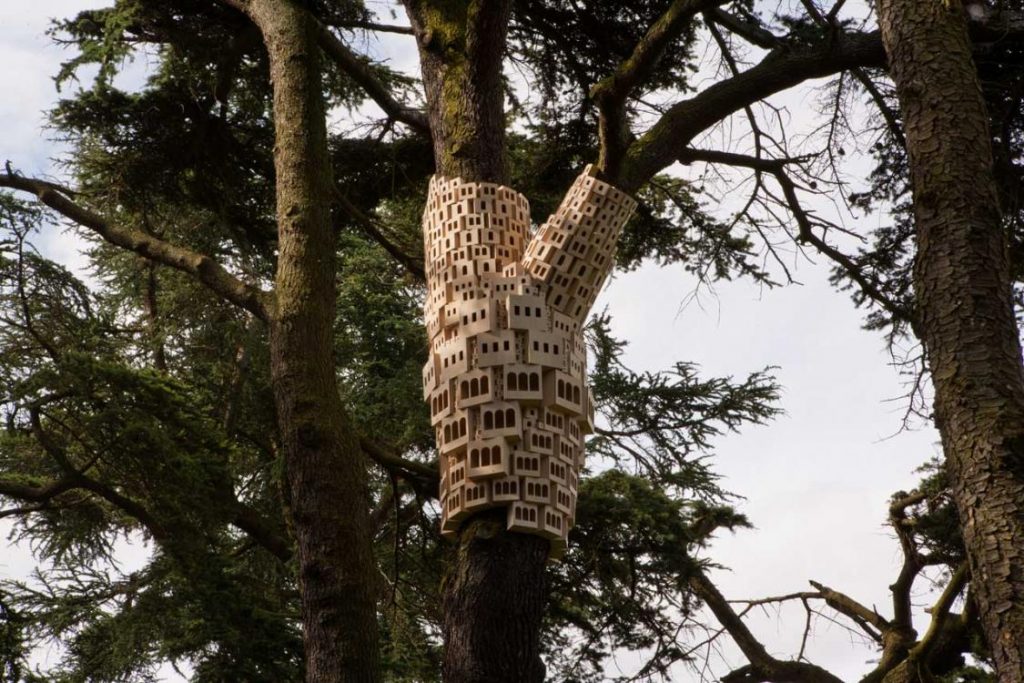
Model in Nottinghamshire. 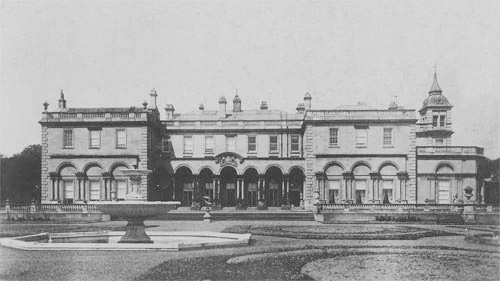
Former summer palace. 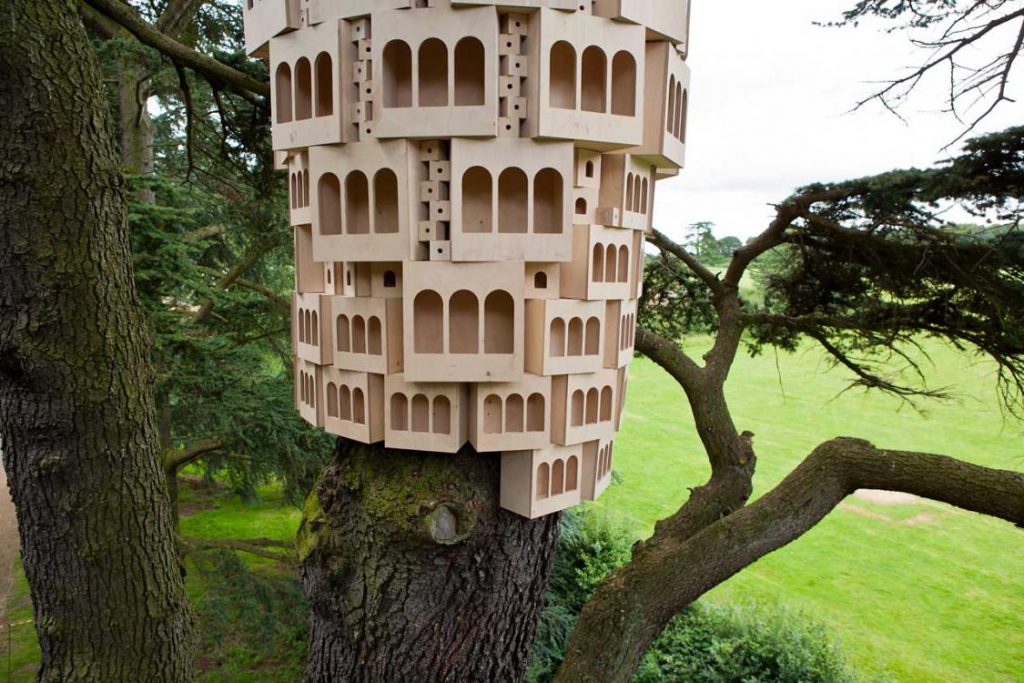
Model in Nottinghamshire. Archs detail, element relating past and present.